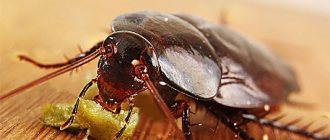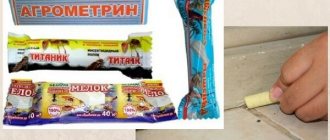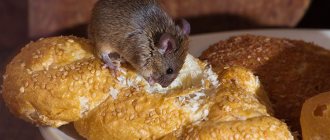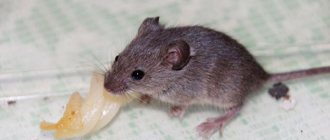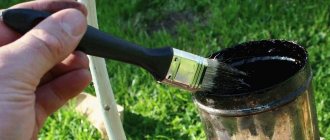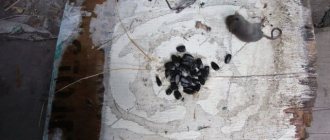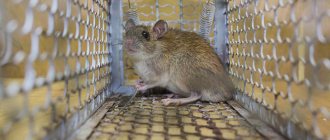Despite the emergence of a mass of means and methods aimed at exterminating rodents in the house, a considerable number of ordinary people prefer to use effective and time-tested methods, for example, a device for catching mice, traditionally called a mousetrap.
To catch small rodents, it is important to know: how to properly load a mousetrap, choose the appropriate bait and place to install the trap. Devices of equal efficiency can be purchased at specialized retail outlets or made with your own hands.
How to charge
To successfully hunt rodents that have settled in your home, it is important to know how to use a mousetrap. The most effective devices are spring ones. In this case, you can choose the option for disposable or reusable use.
In the second case, after each rodent hit, you will have to remove the deceased mouse yourself.
If there are a large number of rodents in your home, it is recommended to use special inexpensive kits that include three to five disposable or reusable devices.
Mousetraps of this type should be placed in places inaccessible to children and pets.
A common mistake most people make when threading a mousetrap is setting too much spring. In this case, the device only works when strong pressure is applied to the bait, which can reduce fishing efficiency.
It is important to place the gifts prepared for mice in such a way that the mousetrap is triggered even with slight contact.
To charge the mousetrap, you need to follow the following algorithm:
- First, you need to place a treat, prepared in advance for rodents, on the trigger, at one end of which there is a spring or a so-called clip.
- Next, place the holder on the same hook, which must be carefully inserted into the corresponding groove of the trigger mechanism.
- It is recommended to carry out all actions with rubber gloves; you should also not touch the mousetrap with bare hands before using the device. This is due to the fact that the smell of a person can alert a mouse.
- The installation of metal mousetraps is somewhat different from the actions performed with wooden devices. To set such a trap, you need to direct the metal pin in the direction opposite to the location of the spring. Pull the bracket in the same direction, and then install the pin on it.
If the device is disposable, do not attempt to reuse it. After catching a rodent using such a mousetrap, you must immediately get rid of the trapping device.
Bait selection
The basis for successful rodent fishing is choosing the right bait. It is widely believed that mice love cheese and, if possible, eat this product exclusively. In fact, rodents prefer cereals, meat products, and sweets.
To catch annoying rodents, it is recommended to choose the following food products as bait:
Periodically you need to inspect the mousetrap. If the bait remains intact, there is a good chance that the rodents have access to food sources that they find particularly attractive.
To whet the mouse clan's interest in the bait, you need to replace the old one with fresh products. You also need to replace it after catching each rodent.
When using mousetraps, you cannot ignore the main safety rules.
If the home is inhabited by pets that are overly curious, it is recommended to install the mousetrap in hard-to-reach places, as the device can cause harm to a dog, cat or other family pets.
If you find an error, please select a piece of text and press Ctrl+Enter. We will definitely fix it, and you will get + to karma
Source
Where and how to install
It is recommended to place a mousetrap in a place where rodents most often live, for example, in the kitchen. This must be done using rubber gloves so that the human smell does not scare off the mice.
Can be installed in the following areas:
- In the space under the furniture.
- Wall voids, if any.
- If there are pantries, a basement, a cellar or other premises that are intended for storing food, the installation should be done there.
- You can also place mousetraps on cabinet shelves that are needed to store food supplies.
If there are no specific areas, you can place the mousetrap where it will not pose a danger to pets and children. Sooner or later, rodents attracted by the scent of the bait will fall into the trap.
Bait selection
The right bait is the basis for successful rodent control. Even the best traps will be powerless if the mouse is not interested in the food on offer. The prevailing opinion that mice are madly fond of cheese is not true. This product is far down the list of rodent preferences; the first lines are occupied by completely different baits.
A list of what to put in a mousetrap to be sure to lure a mouse:
For traps without a trigger, you can use industrial mouse trap attractant baits; they are made from food products with the addition of odorous substances that attract rodents.
The rodent does not pay attention to the bait in the mousetrap if it does not suit its tastes. In this case, the product must be replaced. Also, mice do not react to something tasty in a charged trap when they have access to human food - loosely covered food containers or a pile of crumbs on the table and under their feet. You should only touch mousetraps with gloves, so there will be no human odor left on them, which could alert the mouse.
How does it work
The operating principle of an ordinary wooden mousetrap is extremely simple. If the device was installed according to the required rules, which require holding the metal spring in a cocked state, an attempt by a mouse to eat or drag away the bait will cause the frame to slam shut.
To properly load the trap, it is important to practice in advance. For example, a mousetrap will not work if the hook is not on the edge of the rod.
It should be noted that structures of this type are not humane towards rodents, and also have a low level of hygiene. To use a mousetrap for a long time, you need to thoroughly wash it after each animal you catch.
To prevent this from happening, it is recommended to purchase a different type of trap.
Installation locations
In rooms where children and pets live, it is better not to catch mice with open-type devices, since there is always a chance that what is caught will not be a rodent at all. Traps with a loop are also not a good option - the thin wire easily cuts the skin. In these cases, it is better to install a mousetrap-cage or a model of similar action made of plastic pipes and boxes.
You can catch rodents anywhere in the apartment, even in remote corners you will still encounter them from time to time, but for greater efficiency, the chosen mousetrap is installed along the routes of pests from nests to products.
Mice prefer to hide under cabinets, in drawers, between furniture, in floor and wall cavities.
Modern renovation with an abundance of drywall is a dream for any rodent. The nest can also be located outside the house - in an adjacent shed or garage, in the attic, in the basement, in bushes or a pile of branches near the wall, in cracks in the foundation. Then burrows lead into the room - small holes near the floor. You can also determine where mice are by looking at the excrement left behind and spoiled food.
Traps are placed near these places along baseboards and between furniture. It is better if there are several mousetraps, since mice are caught mainly at night, and it will not be possible to immediately recharge the devices.
Despite the emergence of a mass of means and methods aimed at exterminating rodents in the house, a considerable number of ordinary people prefer to use effective and time-tested methods, for example, a device for catching mice, traditionally called a mousetrap.
To catch small rodents, it is important to know: how to properly load a mousetrap, choose the appropriate bait and place to install the trap. Devices of equal efficiency can be purchased at specialized retail outlets or made with your own hands.
How to assemble a wooden mousetrap
The simplest type of device, but highly effective, is called wooden mousetraps. They are easy to install and assemble, and the results obtained will break all records. You can make a trap called “mink” yourself.
This type of device will help you quickly get rid of any number of parasites.
The algorithm for assembling a wooden device is as follows:
- First you need to prepare a wooden beam, the sides have the following values: 120 by 40 by 90. For ease of work, the workpiece must be sanded in advance using sandpaper.
- Next, three indentations should be made in the narrow side of the block, the size of which corresponds to the size of the rodent’s body. This can be done in convenient ways, for example, using a drill.
- Inside the device you need to place a noose made of strong but elastic thread or wire. The noose should be secured with a thin thread. Thick fibers cannot be used, since the operation of the structure is based on damage to the thread by a rodent.
- The threads should be positioned in such a way as to block the rodent's access to the bait located in the depths of the burrows. When trying to get to the treat, the mouse chews the threads, thereby releasing the loop, which, in fact, kills the unwary rodent.
The device can be used repeatedly. If a large number of rodents have settled at home, you need to make several mousetraps. When used correctly, they will help quickly get rid of parasite infestations.
It must be remembered that after each rodent caught, the trap should be cleaned. This must be done, despite the fact that there may be two or more holes in the block.
Video
Mousetrap in action (detailed video review)
Types of mouse traps
The range of mousetraps is huge; almost all variations cope with their task. All that remains is to choose whether to kill the mouse or release it, see the dead animal, and whether to touch it or not. Also important are the cost of traps, the ability to buy them in large quantities, as well as safety for children and animals.
Modern mousetraps are mostly mechanical; they are activated by a spring, which can forcefully slam the trap or quickly close the door.
With frame
The mechanism in mousetraps with a frame is metal, the base is often made of wood, sometimes of a sheet of metal. A rectangular frame equipped with a spring is fixed in the cocked position using a metal rod placed on a hook. The bait also clings to the same hook. The mouse, pulling the bait, releases the frame that kills the animal. After each rodent caught, this trap must be installed again.
To charge this mousetrap you need:
Since charging this type of mousetrap correctly is not easy, you will have to practice several times. The trap does not trigger unless the hook is at the very edge of the rod. The bait must be hard enough so that the rodent has to tinker and thereby trigger the mechanism.
Wooden mousetraps are not very successful from a hygiene point of view - the blood and urine of rodents are absorbed into the wood, and bacteria multiply over time. A metal mousetrap is much better in this regard - it is easy to wash and treat with antiseptics.
With loop
A rodent trap with a loop is the simplest mouse trap. It is a wooden or plastic block with one or more holes. Inside the hole is a noose made of elastic wire, which is secured with a thread. In the depths there is feeding. The mouse, trying to get to the food, chews the thread, releases the wire and dies in the noose.
To install this mousetrap, you need to use a long needle or wire to thread a thread through the holes, bend the wire with a loop and tie a strong knot on top so that the noose is held in the lower position by the thread.
Traps
The design of this mousetrap is similar to traps for large animals, but the mouse trap is smaller and located horizontally. The arches are usually made of plastic and equipped with teeth along the perimeter. To set a trap, press the clamp at the back, place the bait on the plate inside and release the clamp. Similar traps are also available for rats; they are larger than mouse traps and equipped with a stronger spring.
There is also a humane mousetrap based on the same principle. It is much longer and the feeding is located deep in the structure. The jaws close when the mouse is completely inside, so it does not suffer any damage.
Cells
A mousetrap cage is a box of metal rods with a door that closes with a spring. This design is called a live trap; more often it is used for catching larger animals - minks, muskrats, raccoons. You can catch a rat in such a cage. A live trap for mice is the tiniest of them, but it is designed in the same way: in the middle of the box there is a hook, on one end of which a bait is attached, and the other holds a spring.
Swing
Another trap that does not harm the rodent is based on the swing principle. The design of the mousetrap is extremely simple; it is based on a long rectangular box, curved in the center, like a boomerang. The trap must be installed so that the part closest to the entrance is in a horizontal position. In this case, the door is fixed open. Having reached the edge of the mousetrap, the mouse overhangs the swing, the door is released and slams shut.
How it works
The most common wooden mousetrap has an extremely primitive design. The elements of such a device are: a base made of wood, a spring, a holder, a stem and a frame.
It should be noted that mousetraps with a metal base have already appeared on the consumer market. They are convenient to use due to ease of maintenance.
When choosing traps, it is recommended to pay attention to the convenience of the device and the materials from which they are made.
Wood is a material that easily absorbs blood, as well as the waste products of rodents, which determines the low level of hygiene of such devices.
So that the mousetrap can be washed and disinfected, it is recommended to choose plastic or metal structures.
